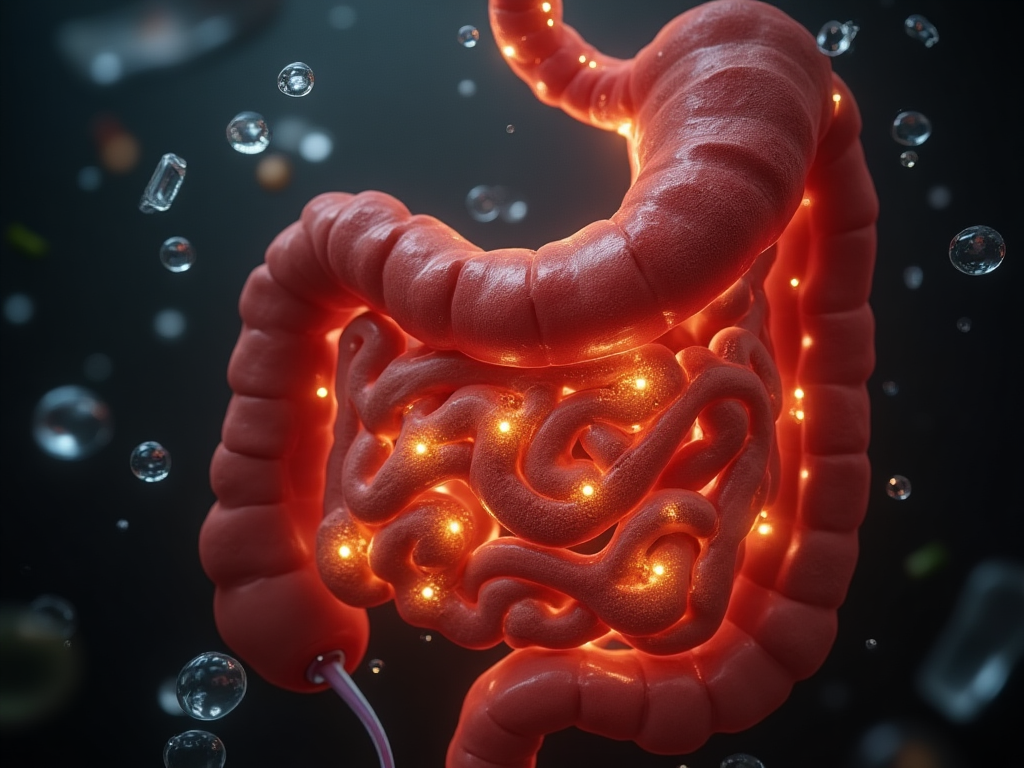
Introduction: You’re Eating a Credit Card’s Worth of Plastic Every Week
Consider this: You unwittingly snack right on plastic enough to credit card every seven days. Anything to make you think it sounds like dystopian fiction? It’s not. A 2024 study in Nature conducted a groundbreaking study of microplastics that revealed these particles in 90% of human stool samples and in three times higher amounts in individuals affected by inflammatory bowel disease (IBD). These microscopic particles which are even smaller than sesame seeds enter our water, food and even the air we inhale. However, the real uncertainty of this is, are we sleepwalking to a gut health disaster?
How Microplastics Sneak Into Your Body (And Why You Can’t Stop Them)
Microplastics do not always originate in conspicuously visible places such as plastic bottles or takeout meals. They find their way in the tap water, seafood, and honey, and even in the table salt. In 2023 an Environmental Science & Technology article discovered that microplastics in the air land on our food as well, contributing to the invisible consumption. Better still, they bioaccumulate, aka the more you are exposed, the more these things accumulate in your tissues.
- Real-World Scenario: A fisherman in Indonesia, who consumes locally harvested seafood, had microplastic concentration beyond all other parts of the world with over 200 particles per gram of feces. There was also raised liver enzyme levels on his blood test suggesting a systemic inflammatory condition.
The most frightening is? Nobody is invulnerable. Even newborns are not spared- A team of scientists at the University of Amsterdam found out that microplastic was present in 75 percent of the examined placental tissues.
Gut Under Attack: The Alarming Link to IBD, Obesity, and More
What would be our worry is that microplastics are passing by without a problem. However growing evidence indicates that they are causing havoc in our gut microbiome, causing inflammation, and in fact, potentially damaging the gut barrier (a.k.a. leaky gut).
In a 2024 paper in Environmental International, researchers compared an IBD-patient with standard gut biopsies and a control patient. The results? Individuals with Crohn s or colitis possessed an elevated degree of microplastic. Scientists postulate that these balls behave as Trojan horses, and are loaded with endocrine disruptors (such as BPA and phthalates) that fuddle our immune systems.
“We are finding the microplastics embedded in the tissue of the gut, immotile as it is in a constant state of immune activation.“
Dr. Kara Wade is an Environmental Toxicologist at Johns Hopkins University.
And it is not only IBD. Some early animal research indicates changes to metabolism are also possible with microplastics leading to insulin resistance and obesity. There might be a hidden ally of the global obesity crisis.
Are We Too Late to Reverse the Damage?
Shall we put it bluntly: microplastics are everywhere, and we get just beginning to understand the effects. You can stop smoking or alcohol, but you can not do the same thing with plastic, which is contained in our food chain, drinking water, and even in our medical devices.
- Case Study: In 2023, an assortment of fast-food workers in Texas were tried with toxin testing. The participants who ate lunch at the workplace (usually packed in plastic) contained 40 percent increased phthalate levels in comparison with those who brought their own lunch.
Governments are running to react. EU will prohibit the intentional addition of microplastic in cosmetic products as of 2025, and Californians are in discussions to refuse microplastic filtration on a statewide basis. However, 11 million metric tons of plastic is found to enter oceans every year additionally, can regulation be sufficient?
What You Can Do Right Now (Because Waiting Isn’t an Option)
Systemic change is not immediate so there are ways that you can lessen your exposure now.
- Abandon plastic containers (hot food in particular heat leaches out toxins).
- Filter your water (reverse osmosis will eliminate up to 99 percent of microplastics).
- Use fresh unpackaged food (67 percent fewer microplastic in organic produce found by a Consumer Reports study released in 2024).
But in all honesty, this will not be solved by individual action. We require corporate responsibility (staring you in the face, Big Beverage) and policy change, including declaring microplastics a health emergency, rather than a pollution problem.
Final Thought: This Is the Lead Poisoning of Our Generation
Microplastic is not only an ecological problem, but it is also a gradual health disaster. Such is true of lead in gasoline, or the asbestos in the insulation, in 20 years we will say: Why did we not do anything sooner?
The conclusion here is that there is no use waiting around to have conclusive evidence that something will harm us. It will be too late. It is time to turn around and, before it is late, and our guts get their revenge.